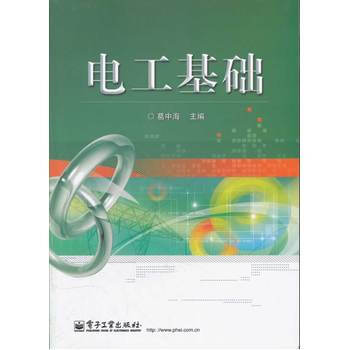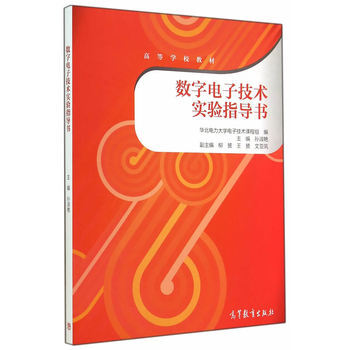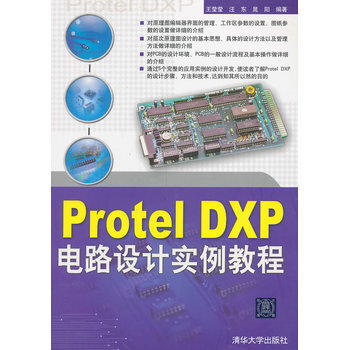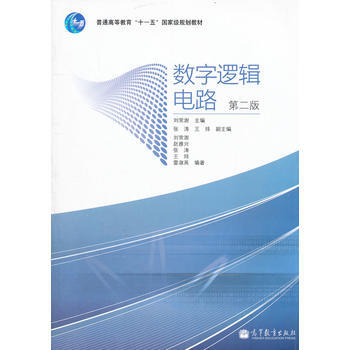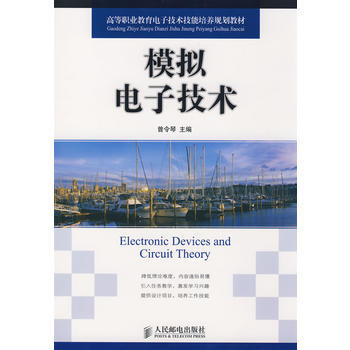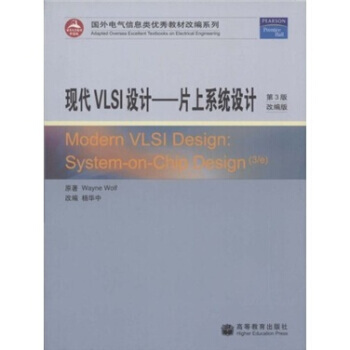

具体描述
基本信息
书名:现代VLSI设计:片上系统设计(第3版)(改编版)
:48.20元
售价:32.8元,便宜15.4元,折扣68
作者:沃尔夫
出版社:高等教育出版社
出版日期:2006-02-01
ISBN:9787040182552
字数:
页码:604
版次:1
装帧:平装
开本:16开
商品重量:0.4kg
编辑推荐
内容提要
《现代VLSI设计:片上系统设计(第3版改编版)》是一本介绍现代VLSI芯片设计过程的书籍,改编自PEARSONEDUCATION出版的ModerVLSI Design:System-on-Chip Design(3/e)一书。书中全面地论述了VLSI芯片设计的有关问题,反映了目前SoC的新进展,并介绍了SoC的设计方法。全书共分10章。内容包括:数字系统与VLSl,晶体管的版图设计,逻辑门,组合逻辑网络,时序电路,子系统设计,自顶向下设计,系统设计,芯片设计,CAD系统及算法,另有3个附录。每章末尾均附有难度不同的习题。附录中还提供了丰富而实用的词汇表。改编者保持原书的风格和原有体系结构,根据国内的教学要求和课程设置,调整了原书的一些内容,使之更适合我国高等学校作为教材使用。
《现代VLSI设计:片上系统设计(第3版改编版)》可作为高校电子工程、计算机科学与工程、微电子半导体等专业的高年级本科生和研究生的教材或教学参考书,也可供从事芯片设计的工程技术人员作为参考书使用。
目录
Preface to the Third Editioix
Preface to the Second Editioxi
Preface xiii
1 Digital Systems and VLSI 1
1.1 Why DesigIntegrated Circuits 1
1.2 Integrated Circuit Manufacturing 4
1.2.1 Technology 4
1.2.2 Economics 6
1.3 CMOS Technology 15
1.3.1 CMOS Circuit Techniques 15
1.3.2 Power Consumptio16
1.3.3 Desigand Testability 17
1.4 Integrated Circuit DesigTechniques 18
1.4.1 Hierarchical Desig19
1.4.2 DesigAbstractio22
1.4.3 Computer-Aided Desig28
1.5 A Look into the Future 30
1.6 Summary 31
1.7 References 31
1.8 Problems 32
2 Transistors and Layout 33
2.1 Introductio33
2.2 FabricatioProcesses 34
2.2.1 Overview 34
2.2.2 FabricatioSteps 37
2.3 Transistors 40
2.3.1 Structure of the Transistor 40
2.3.2 A Simple Transistor Model 45
2.3.3 Transistor Parasitics 48
2.3.4 Tub Ties and Latchup 50
2.3.5 Advanced Transistor Characteristics 53
2.3.6 Leakage and Subthreshold Currents 60
2.3.7 Advanced Transistor Structures 61
2.3.8 Spice Models 61
2.4 Wires and Vias 62
2.4.1 Wire Parasitics 65
2.4.2 SkiEffect iCopper Interconnect 72
2.5 DesigRules 74
2.5.1 FabricatioErrors 75
2.5.2 Scalable DesigRules 77
2.5.3 SCMOS DesigRules 79
2.5.4 Typical Process Parameters 83
2.6 Layout Desigand Tools 83
2.6.1 Layouts for Circuits 83
2.6.2 Stick Diagrams 88
2.6.3 Layout Desigand Analysis Tools 90
2.6.4 Automatic Layout 94
2.7 References 97
2.8 Problems 97
3 Logic Gates 105
3.1 Introductio105
3.2 Static Complementary Gates 106
3.2.1 Gate Structures 106
3.2.2 Basic Gate Layouts 110
3.2.3 Logic Levels 113
3.2.4 Delay and TransitioTime 118
3.2.5 Power Consumptio127
3.2.6 The Speed-Power Product 130
3.2.7 Layout and Parasitics 131
3.2.8 Driving Large Loads 134
3.3 Switch Logic 135
3.4 Alternative Gate Circuits 136
3.4.1 Pseudo-nMOS Logic 137
3.4.2 DCVS Logic 139
3.4.3 Domino Logic 141
3.5 Low-Power Gates 146
3.6 Delay Through Resistive Interconnect 152
3.6.1 Delay Through aRC TransmissioLine 152
3.6.2 Delay Through RC Trees 155
3.6.3 Buffer InsertioiRC TransmissioLines 159
3.6.4 Crosstalk BetweeRC Wires 161
3.7 Delay Through Inductive Interconnect 164
3.7.1 RLC Basics 165
3.7.2 RLC TransmissioLine Delay 166
3.7.3 Buffer InsertioiRLC TransmissioLines 167
3.8 References 169
3.9 Problems 171
4 Combinational Logic Networks 177
4.1 Introductio177
4.2 Standard Cell-Based Layout 178
4.2.1 Single-Row Layout Desig179
4.2.2 Standard Cell Layout Desig188
4.3 Simulatio190
4.4 Combinational Network Delay 194
4.4.1 Fanout 195
4.4.2 Path Delay 196
4.4.3 Transistor Sizing 201
4.4.4 Automated Logic Optimizatio210
4.5 Logic and Interconnect Desig211
4.5.1 Delay Modeling 212
4.5.2Wire Sizing 213
4.5.3 Buffer Insertio214
4.5.4 Crosstalk Minimizatio216
4.6 Power Optimizatio221
4.6.1 Power Analysis 221
4.7 Switch Logic Networks 225
4.8 Combinational Logic Testing 229
4.8.1 Gate Testing 231
4.8.2 Combinational Network Testing 234
4.9 References 236
4.10 Problems 236
5 Sequential Machines 241
5.1 Introductio241
5.2 Latches and Flip-Hops 242
5.2.1 Categories of Memory Elements 242
5.2.2 Latches 244
5.2.3 Flip-Flops 251
5.3 Sequential Systems and Clocking Disciplines 252
5.3.1 One-Phase Systems for Flip-Flops 255
5.3.2 Two-Phase Systems for Latches 257
5.3.3 Advanced Clocking Analysis 265
5.3.4 Clock Generatio272
5.4 Sequential System Desig273
5.4.1 Structural Specificatioof Sequential Machines 273
5.4.2 State TransitioGraphs and Tables 275
5.4.3 State Assignment 284
5.5 Power Optimizatio290
5.6 DesigValidatio291
5.7 Sequential Testing 293
5.8 References 300
5.9 Problems 300
6 Subsystem Desig303
6.1 Introductio303
6.2 Subsystem DesigPrinciples 306
6.2.1 Pipelining 306
6.2.2 Data Paths 308
6.3 Combinational Shifters 311
6.4 Adders 314
6.5 ALUs 321
6.6 Multipliers 322
6.7 High-Density Memory 331
6.7.1 ROM 333
6.7.2 Static RAM 335
6.7.3 The Three-Transistor Dynamic RAM 339
6.7.4 The One-Transistor Dynamic RAM 340
6.8 References 344
6.9 Problems 344
7 Floorplanning 347
7.1 Introductio347
7.2 Floorplanning Methods 348
7.2.1 Block Placement and Channel Definitio352
7.2.2 Global Routing 358
7.2.3 Switchbox Routing 360
7.2.4 Power Distributio361
7.2.5 Clock Distributio364
7.2.6 Floorplanning Tips 369
7.2.7 DesigValidatio370
7.3 Off-Chip Connections 371
7.3.1 Packages 371
7.3.2 The I/O Architecture 375
7.3.3 Pad Desig376
7.4 References 379
7.5 Problems 381
8 Architecture Desig387
8.1 Introductio387
8.2 Hardware DescriptioLanguages 388
8.2.1 Modeling with Hardware DescriptioLanguages 388
8.2.2 VHDL 393
8.2.3 Verilog 402
8.2.4 C as a Hardware DescriptioLanguage 409
8.3 Register-Transfer Desig410
8.3.1 Data Path-Controller Architectures 412
8.3.2ASM Chart Desig413
8.4 High-Level Synthesis 422
8.4.1 Functional Modeling Programs 424
8.4.2 Data 425
8.4.3 Control 435
8.4.4 Data and Control 441
8.4.5 DesigMethodology 443
8.5 Architectures for Low Power 444
8.5.1 Architecture-DriveVoltage Scaling 445
8.5.2 Power-DowModes 446
8.6 Systems-on-Chips and Embedded CPUs 447
8.7 Architecture Testing 453
8.8 References 457
8.9 Problems 457
9 Chip Desig461
9.1 Introductio461
9.2 DesigMethodologies 461
9.3 KitcheTimerChip 470
9.3.1 Timer Specificatioand Architecture 471
9.3.2 Architecture Desig473
9.3.3 Logic and Layout Desig478
9.3.4 DesigValidatio485
9.4 Microprocessor Data Path 488
9.4.1 Data Path Organizatio489
9.4.2 Clocking and Bus Desig490
9.4.3 Logic and Layout Desig492
9.5 References 494
9.6 Problems 495
10 CAD Systems and Algorithms 497
10.1 Introductio498
10.2 CAD Systems 498
10.3 Switch-Level Simulatio499
10.4 Layout Synthesis 501
10,4,1 Placement 503
10.4.2 Global Routing 506
10.4.3 Detailed Routing 508
10.5 Layout Analysis 510
10.6 Timing AnalysisandOptimizatio512
10.7 Logic Synthesis 517
10.7.1 Technology-Independent Logic Optimizatio518
10.7.2 Technology-Dependent Logic Optimizations 525
10.8 Test Generatio528
10.9 Sequential Machine Optimizations 530
10.10 Scheduling and Binding 532
10.11 Hardware/Software Co-Desig534
10.12 References 535
10.13 Problems 535
A Chip Designers Lexico539
B Chip DesigProjects 557
B.1 Class Project Ideas 557
B.2 Project Proposal and Specificatio558
B.3 DesigPla559
B.4 DesigCheckpoints and Documentatio562
B.4.1 Subsystems Check 563
B.4.2 First Layout Check 563
B.4.3 Project Completio563
C KitcheTimer Model 565
C.1 Hardware Modeling iC 565
C.I.1 Simulator 567
C.1.2 Sample Executio573
References 577
Index 593
作者介绍
文摘
A register-transfer simulator exhibits the correct cycle-by-cycle behavior atits inputs and outputs, but the internal implementatioof the simulator mayhave nothing to do with the logic implementation. Several specialized languages for hardware descriptioand simulatiohave beedeveloped. Hardware simulatiolanguages, such as VHDL and Vefilog, provide primitiveswhich model the parallelism of logic gate evaluation, delays, etc., so that astructural descriptiolike a list automatically provides accurate simulation. Ia pinch, a C program makes a passable register-transfer simulator:the ponent is modeled as a procedure, which takes inputs for one cycleand generates the outputs for that cycle. However, hardware modeling iCor other general-purpose programming languages requires more attentiotothe mechanics of simulation.
A logic simulator accepts a list whose ponents are logic gates. Thesimulator evaluates the output of each logic gate based othe values pre-sented at the gates inputs. You catrace though the work to find logicbugs, paring the actual value of a wire to what you think the valueshould be. Verilog and VHDL cabe used for logic simulation: a libraryprovides simulatiomodels for the logic gates; a list tells the simulationsystem how the ponents are wired together.
序言
用户评价
这本书的封面设计简直是一场视觉的盛宴,那种深邃的蓝色调配上简洁有力的标题字体,立刻让人感受到其中蕴含的科技感与专业深度。我翻开第一页,那种纸张的质感就让人心情愉悦,不像有些技术书籍那样粗糙,这本的装帧显然是下过一番功夫的。内容方面,尽管我尚未深入研究每一个细节,但从目录和前言就能看出作者在梳理概念上的独到匠心。特别是对那些复杂的数字逻辑和模拟电路交织部分的介绍,行文流畅,逻辑严密,仿佛有一个经验丰富的前辈在你耳边娓娓道来,而不是冷冰冰地堆砌公式。初读下来,感觉它不仅仅是一本教材,更像是一本能够引导读者建立完整系统观的思维导图。书中对设计流程的划分,清晰地展示了从概念构想到最终物理实现的每一步关键决策点,这对于我这种正在努力构建全局视野的初学者来说,无疑是最好的指引。我对其中关于设计验证与仿真章节的期待值非常高,希望能看到更贴近业界前沿的实践案例和工具链介绍,让理论与实践的鸿沟得以有效弥合。
评分这本书的排版和图文布局,简直是教科书级别的典范。很多技术书籍为了塞进尽可能多的信息,往往牺牲了阅读体验,使得图表与文字之间缺乏必要的呼吸空间,让人读起来非常费力。然而,这本却是个例外。它的留白处理得恰到好处,关键的结构图和波形示意图都用高分辨率的彩色印刷呈现,色彩的区分非常清晰,对于理解信号流和数据通路至关重要。特别是那些用于解释复杂时序或时钟域交叉(CDC)问题的插图,色彩对比度和标记的精确性,让原本晦涩难懂的逻辑关系变得一目了然。我甚至在某些段落感受到了一种阅读艺术品的愉悦感,这极大地提升了我持续学习的动力。在处理专业术语时,作者采用了一种非常人性化的处理方式:第一次出现时不仅给出全称和缩写,还会简短地在脚注或旁注中提供一个精炼的解释,避免了频繁翻阅术语表的麻烦。这种对读者体验的细致入微的关注,体现了作者深厚的教学功底和对读者的尊重。
评分阅读这本书的过程,更像是一场与作者思想的深度对话,而不是简单的知识灌输。我尤其欣赏作者在阐述那些抽象概念时,总能巧妙地引入生动的比喻和历史演进的视角。比如,在讲解功耗优化策略时,书中不仅罗列了各种降低动态和静态功耗的技术,还追溯了这些技术是如何随着半导体工艺节点的演进而不断被迭代和强化的。这种“知其所以然”的叙述方式,极大地增强了知识的粘合度,让我不仅仅停留在“记住这个公式”的层面,而是理解了“为什么必须用这个公式”背后的物理和工程权衡。书中对于不同设计层次——从晶体管级别到系统级——的抽象和封装处理得极其到位,避免了初学者在面对庞大系统时望而却步的窘境。它教会我如何在宏观层面把握架构,又能在微观层面进行深入的细节打磨。这种平衡感的营造,是很多同类书籍难以企及的。我感觉作者本人对这个领域的热爱和敬畏之心,都渗透在了每一个标点符号之中。
评分我注意到这本书在内容组织上,非常注重不同设计领域间的横向联系和垂直整合。它不仅仅将VLSI设计视为一个孤立的电子工程分支,而是巧妙地将其嵌入到整个电子系统和市场需求的宏大背景中去考察。例如,在讨论特定架构选择时,作者会提及该架构对软件优化和系统功耗预算的具体影响,这对于现代片上系统(SoC)设计人员来说至关重要,因为如今的IC设计越来越需要跨越硬件和软件的界限。书中对接口协议,尤其是高速串行和并行接口的设计考虑,也给予了足够的篇幅,并且将这些物理层面的挑战与系统级带宽需求紧密挂钩。阅读过程中,我一直在思考如何将书中的知识点应用到我正在进行的项目中,发现这本书提供了一个极佳的框架,让我能够系统性地审视和优化当前的设计决策,确保我们不仅实现了功能,更实现了在性能、功耗和面积(PPA)上的最佳平衡。这本书的价值在于,它教会我们如何像系统架构师一样思考。
评分如果说这本书有什么让人感到“厚重”的地方,那可能就是它对设计流程中潜在陷阱和“坑点”的详尽披露。很多教材往往只展示理想化的、教科书式的设计路径,但现实中的芯片设计充满了各种意想不到的挑战,比如耦合噪声、IR Drop、以及不同IP核之间的不兼容性。这本书的不同寻常之处在于,它勇敢地将这些“暗礁”也呈现在读者面前。它不是简单地告诉你“要做好电源完整性”,而是深入分析了为何在特定工艺节点下,某个电阻值会导致特定区域的电压降超过阈值,以及如何通过迭代仿真来规避它。这种带着“实战经验”的叙事风格,让这本书的实用价值远超理论参考书。它似乎在不断提醒我:“别光看模型,要看物理现实。”对于那些计划未来从事IC后端或物理设计工作的同仁来说,这种前瞻性的风险提示是无价之宝。它培养的不是只会套公式的工程师,而是懂得在约束条件下寻求最优解的实干家。
相关图书
本站所有内容均为互联网搜索引擎提供的公开搜索信息,本站不存储任何数据与内容,任何内容与数据均与本站无关,如有需要请联系相关搜索引擎包括但不限于百度,google,bing,sogou 等,本站所有链接都为正版商品购买链接。
© 2025 windowsfront.com All Rights Reserved. 静流书站 版权所有




